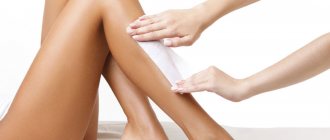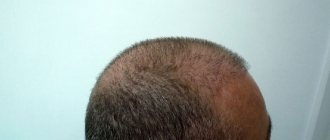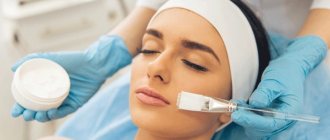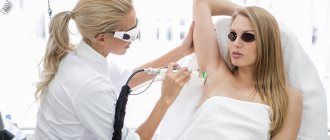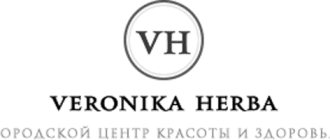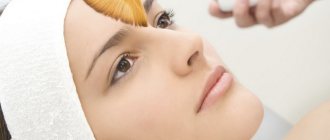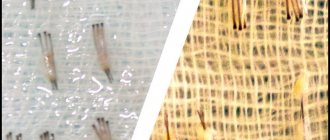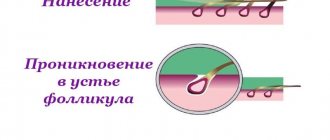Since ancient times, girls have struggled with excess hair on their bodies. Conceivable and inconceivable methods were used that helped get rid of hair, but only temporarily. Modern cosmetology has a lot of innovative ways to get rid of body hair for a fairly long period of time. One of the effective procedures is photoepilation. This is a fast, effective and convenient way to get rid of excess body hair. Let's take a closer look at what the procedure is.
What is meant by photoepilation
This is a technique for removing unwanted hair, which is based on the impact of a high-efficiency light pulse.
The pigment melanin contained in the hair absorbs the light waves emitted by the device. Under the influence of heat, the follicle is destroyed, that is, nutrients and blood stop flowing to the hairs, and they begin to fall out.
Photoepilation, if all the nuances are observed, is absolutely safe for the skin and the body as a whole.
The technique is suitable for men and women, but requires choosing the device settings and eliminating contraindications before the start of the course.
What happens during the session?
During the session, the hairs absorb light energy, which then goes deep into the hair follicles. In this place, the tissues are heated to the point at which the blood in the capillaries coagulates, and the germ zone dies or is partially destroyed.
If the bulb dies completely, then the hair falls out and no longer grows from this follicle for a long time. With partial destruction, atrophy processes occur, as a result of which the physiological growth of the hair is disrupted.
Simply put, hair from damaged follicles begins to grow less coarse and dense, as well as lighter.
The process of photoepilation is otherwise called thermolysis. This term consists of two words - thermo translates as temperature, and lysis means destruction.
Although from a scientific point of view, the name of the technique sounds more correctly as photothermolysis.
When applying this technique, devices (photoepilators) are used with those light waves that are mainly absorbed by the melanin of the hair and, to a lesser extent, by skin pigments.
This principle of operation of devices is called selective or selective photothermolysis.
The intensity of absorption of light pulses depends on the color of the hair, that is, on the amount of melanin it contains. The darker the vegetation, the more active thermolysis occurs. Therefore, photoepilation is more effective when treating dark hair.
Do I need to remove hair before epilation?
Preparation for photoepilation is important, since the effectiveness of the procedure depends on it. Many women doubt whether they should leave their hair or whether it should be removed before the session. The high-pulse light produced by the device recognizes the melanin pigment concentrated in vegetation. If it is not on the body, the process simply cannot take place. However, too long hair will “draw” some of the energy onto itself. With a high degree of probability, complete destruction of the bulb will not occur in this case.
In the best case, it atrophies with disruption of the natural growth cycle, which will lead to a slowdown in the appearance of new hair on the body, a decrease in its thickness and a decrease in color intensity. Therefore, when preparing for photoepilation, vegetation cannot be removed. The recommended hair length is from 1 to 3 mm.
Improved types of procedure
The study of the method as a method of destroying follicles began in the 70s of the last century. But mass-produced devices began to be produced only closer to 2000.
Classical photoepilation has gradually improved and this process is mainly associated with the development of equipment, which sometimes combines several functions.
But still, the types of photoepilation described below do not differ in any special radical changes.
Elos hair removal
The full name of the Electro-Optical Synergy technique. It is based on two types of activity – light wave energy and radio frequency current.
Thanks to the synergy of two types of energy, Elos hair removal helps remove even light and vellus hairs. However, many note that during this procedure the discomfort is much higher than during photoepilation sessions.
LHE hair removal
The method is based on the simultaneous influence of thermal and light energy. Heating and light flashes are provided by a mixture of inert gases, so the emission of waves in ranges hazardous to health (400-450 and 950-1100) is minimized. This completely eliminates the risk of burns.
LHE hair removal does not lead to complete destruction of the follicles, but after the course the number of hairs decreases and their growth slows down.
AFT hair removal
Stands for modernized (improved) luminescent technology. A special feature is the use of filters that convert the ultraviolet and short-wavelength part of light radiation into near-infrared radiation, which does not harm the skin and body.
The length of the emitted waves is up to 800-1000 nm, the risk of burns and other undesirable reactions is excluded.
The technology eliminates peak energy impacts, but its efficiency is high, since the pulses are long.
Fluorescent technology (In-Motion) is implemented in Israeli devices.
AFT hair removal is becoming more and more popular every year, but this technology, just like photo hair removal, shows insufficient effectiveness in removing light hairs.
Frequency and number of sessions
It is impossible to remove all hair in one photoepilation session. Only those hairs and the follicles that feed them that are in the active growth phase are destroyed. And there are from 20 to 25% of these on the body at any one time.
Accordingly, you will have to undergo at least 5 sessions. But in most cases, complete hair removal in one area requires an average of 6-8 procedures.
The frequency of sessions is once every 6-8 weeks. During this period, the treated hair falls out, after which those hairs that were initially at rest begin to appear.
However, the photoepilation scheme for each patient is selected individually. The cosmetologist takes into account the type of skin, the location of the area for hair removal on the body, and the rate of growth of vegetation over time.
The number of procedures and their effectiveness also depends on:
- Photoepilator power.
- Possibility of selecting appropriate settings in the device.
- Experience and qualifications as a cosmetologist.
After completing the entire course, it is advisable to sign up for a single session at least once every six months. This will extend the duration of the result by 5 or more years.
Contraindications
Photoepilation is not performed if, during preparation for the procedure, the patient has identified contraindications and body conditions in which the risk of adverse reactions and complications increases.
Their group includes:
- Acute dermatoses and skin diseases in the acute stage - allergic reactions, psoriasis, eczema, vasculitis, lupus erythematosus, scleroderma, lichen, dermatozoonosis.
- Exacerbation of herpes infection in the affected area.
- Varicose veins (if dilated veins are detected in the planned treatment area).
- Severe cardiac pathologies.
- Severe hypertension.
- Tendency to form keloid scars.
- Malignant processes.
- Neoplasms in the area of influence of benign and malignant nature.
- Moles, especially numerous and large in size.
- Autoimmune skin pathologies.
- Presence of a pacemaker and insulin pump.
- Epilepsy.
- Fresh tan – photoepilation is recommended to be done no earlier than 2-3 weeks after tanning or visiting a solarium.
- Helminthiases.
Photoepilation for pregnant and lactating women is, in principle, not dangerous, but during these periods hormonal changes occur, which can cause hyperpigmentation of the skin after light exposure.
This hair removal method is not recommended during treatment with drugs that increase the skin’s photosensitivity, such as retinoids or acids.
Photoepilation is applicable on almost any part of the body, except for the nipple area. To treat the face, only those devices that are designed specifically for this area should be used.
Electric epilator
This is a mobile electrical device that mechanically removes excess hair. Special tweezers simply pluck hair from the skin. In this case, slight skin irritation in the form of redness or pimples is observed. This is why you should not visit a solarium immediately after the hair removal procedure. Otherwise, the injured skin may be burned under the influence of ultraviolet rays. Several days should pass until the irritation on the skin after hair removal completely disappears, and only then sunbathe on the beach or in a solarium.
Also, you should not use an electric epilator to remove hair immediately after tanning. You can damage your skin and get an uneven tan.
Is it better to do it at home or in a salon?
Currently, special devices are produced both for salon use and for home use. In this regard, the question naturally arises: which photoepilation is better?
Beauty clinics use the most powerful devices, which is why the effectiveness of a professional approach is higher. But high power increases the likelihood of skin soreness and damage.
Devices for home use are characterized by low power, so they cause minimal harm.
Remington IPL6750 I-Light Prestige
Soreness
If you rely on videos from the Internet and the opinions of a number of cosmetologists, photoepilation is characterized by an extremely low degree of pain. But one can argue with this conclusion, since the majority of those who completed the course claim that there is pain.
It is more pronounced during the first sessions, then the skin adapts and the discomfort decreases significantly.
The severity of pain depends on the sensitivity threshold and the treatment area. The most painful treatment is the bikini area, armpits and upper lip.
However, the use of devices with a skin-cooling handpiece and anesthetic gels makes it possible to undergo photoepilation without significant pain in intensity.
Preparatory stage
Immediately after the consultation, a professional cosmetologist will not do anything, but will adjust the preparation period, which in most cases takes a month, and it includes:
- Exclusion for a month from all methods of hair removal and depilation in the area of intended hair removal, except for the use of a razor.
- Before photoepilation, it is advisable to visit a dermatologist. The doctor will rule out skin diseases that are a contraindication to light exposure and determine the type of skin and its sensitivity. Based on the results of the examination, the cosmetologist will be able to select the optimal settings for the device during the procedure.
- 2-3 weeks before the scheduled date of the first session, tanning and visiting the solarium are excluded.
- Taking tranquilizers, antibiotics and drugs that increase the photosensitivity of the skin must be stopped at least two weeks before photoepilation.
- A week in advance, a cream with moisturizing ingredients should be applied daily to the selected area of hair removal.
The main condition for photoepilation is the presence of hairs on the body 2-3 mm long. To ensure this condition, unwanted hair will have to be shaved 2-3 days before the session.
Answers to frequently asked questions
How long does photoepilation last?
On average, the effect of photoepilation lasts from 5 months to several years. Despite the assurances of many salons, it is impossible to permanently stop hair growth using this procedure.
When does hair fall out after photoepilation?
Usually the follicle is destroyed during the session, and the hair itself falls out on days 10–14.
At what age can you do photoepilation?
Minimum age: 18 years.
How often can photoepilation be done?
During the course, about a month passes between sessions. This is the optimal period for the body to adapt to emerging changes.
Is it painful to do photoepilation?
During photoepilation, a slight tingling sensation may occur, but normally there should be no pain. The skin may be more sensitive during IPL hair removal of a deep bikini and chin. The severity of unpleasant sensations directly depends on the client’s pain threshold and his individual susceptibility.
Does hair grow after photoepilation?
Yes, especially if the course is not completed, the hair follicles can recover and the hair will grow again. But the procedure allows you to remove them for a long time.
Is it possible to shave after photoepilation?
No. Impact on the hair follicles with a razor can negate all the efforts of ipl hair removal, since damage to the follicle leads to increased blood supply and, accordingly, accelerated growth.
How long can you sunbathe after photoepilation?
Sun tanning or going to a solarium is contraindicated for a month after the procedure.
Is it possible to do photoepilation in the summer?
Summer is not a contraindication for procedures. Hair removal can be done at any time of the year. But be sure to use protective creams after procedures.
Does photoepilation cause cancer?
Hair removal can cause skin cancer, however, the likelihood of their development is extremely low. But oncology is a clear contraindication. Because the method can provoke tumor growth.
Can there be burns after photoepilation?
A faulty device and an unqualified specialist may result in burns and scars.
Technology
Regardless of the location of hair removal on the body, photoepilation is carried out in several stages:
- The client sits in a chair or sits on a couch.
- The wizard sets the device parameters.
- The skin is treated with an antiseptic.
- A gel is applied to the skin in the treatment area to protect it from the intense light pulse. Its use prevents burns and the formation of pigmented spots.
- The master and the client put on safety glasses.
- The cosmetologist moves the manipulator over the selected area without touching the surface of the body.
The duration of the session depends on the treatment area. On average it lasts 5-20 minutes. After the procedure, you can go home immediately.
Photoepilation of arms and legs is carried out according to the usual algorithm, but for legs a contraindication to the procedure is varicose veins.
Features of holding over the upper lip
Removing antennae can be quite a sensitive undertaking. The use of devices with a cooling manipule reduces pain. Such devices also minimize the risk of pigmentation in this area.
The duration of photoepilation above the lip is 5-10 minutes, sessions are repeated after 3-4 weeks. After the procedure, slight redness is noted, which is considered normal.
Deep bikini
It is carried out to correct the hairline in the groin area. This type of hair removal is classic.
A deep bikini is the removal of a large part of hair, including from intimate areas, intergluteal folds, and the anus.
When using this technology in men, hair is removed from the groin area, scrotum, etc.
Photoepilation in the intimate areas can be very painful. To reduce sensitivity, local application of an anesthetic gel is recommended.
Feelings after finishing the session
After photoepilation, the skin turns red and remains irritated, swollen and especially sensitive for 1-2 days.
The intensity of irritation can be reduced if you touch this area as little as possible and periodically apply Bepanten or Panthenol to the body.
Preparation for the procedure
Initial preparation is to visit a dermatologist. Without this, it is not advisable to start a hair removal course. A medical specialist will identify contraindications to the procedure, examine the skin for defects, scratches, diseases, and determine the required parameters of the light wave. If necessary, he will explain the methodology in detail.
Preparation for direct manipulation consists of 4 points.
- A month before the procedure, only a razor or special creams should be used on the body.
- 14 days before visiting the salon, there should be no tan on the skin, so no solarium.
- On the eve of the procedures, you cannot shave with a razor or other methods; it is important that the hair length is at least 2 mm.
- Epilation of intimate areas additionally requires all necessary hygiene procedures with the exception of shaving.
Caring for the treated area
During the recovery period after each photoepilation session, it is necessary to exclude the influence of irritating factors that can increase the likelihood of complications and reduce overall effectiveness:
- On the first day, it is advisable not to wet the treatment area with water.
- Avoid applying cosmetics, including decorative cosmetics, for 2-3 days.
- Avoid hot baths, saunas, and steam baths for at least a week. It is better to wash in a warm shower.
- The skin should be protected from exposure to sunlight for 2-3 weeks. Before going outside, apply sunscreen, and it is better to cover the treated areas with loose-fitting clothing.
- You cannot exercise intensively for 3-5 days, as physical activity provokes sweating.
- You can reduce irritation with Bepanten or another cream recommended by a cosmetologist.
After 2-3 days, the treated area can be moisturized with creams. Sufficient consumption of clean water also helps to increase skin hydration.
Useful tips
In order to get the maximum effect from hair removal, you should follow these simple tips:
- The minimum hair length should be half a centimeter for quick and painless hair removal.
- It is not recommended to visit the sauna or swimming pool before the procedure.
- Before and after the procedure, solarium is contraindicated.
- After hair removal, moisturizers should be applied to the skin to quickly restore the damaged upper layer of the epidermis.
- All instruments for hair removal must be sterile to minimize the risk of infection.
Complications
If you follow all the nuances of photoepilation, the risk of complications is minimal. Negative consequences are explained by non-compliance with the preparatory stage, lack of experience of the cosmetologist, the use of an outdated model of devices, and increased sensitivity of the skin to light.
After photoepilation, complications such as:
- Burns. They arise due to the high content of melanin in the skin, which is observed after tanning and in people who are too dark. Burns are possible on dry, thin skin, and also if the density and intensity of light energy is incorrectly selected.
- Folliculitis. Inflammation of the follicles is observed in patients with increased sweating and if restrictions on water procedures are not observed immediately after photoepilation.
- Acne formation. An acne-like rash most often appears in young boys and girls with dark skin. They usually go away without additional treatment within 7-10 days.
- Exacerbation of herpes. It is possible if a herpes rash has already appeared on the epilated area. If you have a history of herpes, it is recommended to take a course of suitable antiviral drugs 2 weeks before photoepilation.
- Allergy. Occurs with increased sensitivity to the sun. Manifested by urticaria, hyperemia, itching. Treatment is selected depending on the severity of symptoms.
- Eye damage. Only noted if safety glasses are not used. The likelihood of vision impairment and other eye problems increases with photoepilation in the eyebrows and forehead.
- Pigmentation. Usually appears after 2-3 weeks in the form of light spots. Such changes indicate a burn.
- Paradoxical increase in hair growth or hypertrichosis. It occurs due to insufficient density of light waves, which ultimately, instead of destroying the follicles, leads to stimulation of their development and growth. It is more often observed on the face and neck at the border passing between the area treated and untreated with photoepilator.
- Scar formation. Scar tissue is a consequence of a burn, although keloid scars can also appear due to the body's tendency to form them.
- Increased sweating or change in the smell of sweat to an unpleasant one (bromhidrosis). When treating hair follicles, the sweat glands can also be affected, which will not change their functioning for the better.
- Graying of hairs. It is extremely rare.
Photoepilation can also lead to malignant skin lesions. But this rarely happens even if the light pulses touch moles, warts, wounds and nevi located in the treatment area.
Which areas should absolutely not be shaved before the procedure?
Before the procedure, hair is shaved, but preparation for photoepilation on the face excludes such actions. The ban does not apply to men - it applies directly to women. Shaving itself can trigger hair growth. With a high degree of probability it will become thicker, tougher, darker. Therefore, a woman should not shave her facial hair under any circumstances. This especially applies to preparation for photoepilation.
The thing is that it will not be possible to destroy all hair follicles in one session. This will require 3-7 sessions, between which the hair will continue to grow, but it will be thick, hard, and dark. Much depends on the type and quality of the photoepilator. Home devices do not always do their job well. Some have virtually no positive effect. Maximum – slow down growth. Therefore, you need to think carefully before shaving your facial hair as a preparation.
Photoepilation devices
Photoepilators are divided into stationary and mobile. The former are recommended for use only in cosmetology clinics and offices.
These are quite massive devices, some of which are equipped with additional functions.
Home photoepilators are small devices, mostly similar in appearance to a hair dryer.
YPERION L900
Stationary device from a French manufacturer. Suitable not only for photoepilation (16 programs), but also for photorejuvenation (12 programs) of the skin.
The applicator is equipped with hydraulic cooling. Changing modes is achieved with one click of a button.
The manufacturer guarantees free servicing of the device and free replacement of applicators during the stated service life.
4S System device
Multifunctional cosmetology device from China and which provides 4 functions:
- E-light – hair removal on the body using IPL + RF technology.
- IPL – photorejuvenation and photoepilation.
- RF – radiofrequency tightening (lifting) of the skin.
- Neodymium laser. Used to remove tattoos, pigment spots, and spider veins.
The software in the device is multilingual.
Skin Station Kona
The device is made in Israel. It is used for photorejuvenation and hair removal, including vellus and light hair.
The device features Optimal Pulse Train technology, which divides the main light pulse into 3 with an adjustable interval between them.
Due to this operation of the device, photoepilation is less painful, and the epidermis does not overheat.
CosBeauty Perfect Smooth Joy
Photoepilator for home use, produced in Japan. The lamp life is designed for 300 thousand flashes. The set includes three attachments - a standard attachment for the body, an attachment for a bikini and a face.
The device provides automatic detection of skin type and 5 power modes. Powered by rechargeable battery. One charge is enough for 60 minutes of continuous operation.
Philips BRI950 Lumea Prestige
The device is produced by the famous Dutch company Philips. Lumea Prestige is designed for photoepilation of the face and body; 2 replaceable attachments provide convenient treatment of the zones.
The device operates both from mains and battery. There are 5 operating modes, there is a sensor that determines the color of the skin.
Precise Touch Pro
The manufacturer of the photoepilator is the Israeli company ILUMINAGE. Battery powered, three power levels. Suitable for face and body, there is a skin tone sensor and a sensor that detects contact with the body surface.
Photoepilation and laser hair removal - which is better?
Both laser hair removal and photoepilation are based on light technology. The difference between these two techniques lies in the nature of the propagation of the light wave.
During photoepilation, light is scattered, that is, it affects not only the hair and follicle itself, but also the surrounding tissue.
Laser hair removal is a more precise procedure, since the radiation affects only the hair itself.
The main differences between laser hair removal and photoepilation are given in the table.
| Peculiarities | Photoepilation | Laser hair removal |
| Processing speed | High because the flash covers a large area at a time | Compared to photoepilation it is lower, so the session lasts at least 2 times longer |
| Light pulse focusing accuracy | Low because some of the color is scattered | High – the laser beam has a highly targeted effect |
| Degree of penetration deep into the skin | Low, so deep follicles may not be affected | The laser penetrates to a depth of 5-7 mm, which makes it possible to destroy deep-lying bulbs |
| Processing areas | The handles of photoepilators are wide, which is not very convenient when epilating small areas, for example, near the eyebrows | The procedure is carried out with a thin manipulator handle, which allows you to treat all hard-to-reach areas |
| Effective when epilating light hair | Photoepilation does not give the desired result when removing light and vellus hair | Depends on the type of laser used. For blondes, diodymium and laser are more suitable |
| Soreness | Depends on treatment area | The pain is less pronounced compared to photoepilation, since light flashes occur within microseconds |
| Possibility of application depending on phototype | Not suitable for very dark skin | Suitable for almost all phototypes |
| Frequency of sessions | From 4 to 8 | 6-12 |
| The need to use gel | Gel reduces the risk of burns | According to the client's request |
| Average cost per session | 500 rubles | 800 rubles |
It is best to choose the type of hair removal with a cosmetologist. Despite a number of obvious advantages of laser removal, photoepilation also has a number of advantages, which determine the effectiveness of the fight against unwanted vegetation in each case.
Photoepilation price by zone?
Price for one procedure depending on zones:
- Eyebrows – $67.
- Photoepilation of the upper lip – $60–70.
- Forehead – $60.
- Cheeks – $60.
- Whole face – $80.
- Belly – $60–70.
- Chin – $60.
- Breast area – $50.
- Armpits – $70.
- Bikini – $80.
- Photoepilation of the intimate area – $160.
- Shins – $180.
- Hips – $200.
- Legs – $350.
- Back – $60–70.
- Neck – $70.
- Buttocks – $90.
Features of home photoepilation
Self-photoepilation is convenient because sessions can be carried out at any time. Devices for home use cost between 20-30 thousand rubles, and many manufacturers guarantee their uninterrupted operation for 5 years or more.
Naturally, home photoepilation in this case will be cheaper. But in order for the procedures to produce results and not lead to side effects, all the nuances of the technology must be observed.
What beginners need to know:
- Photoepilation is carried out only with protective glasses, even if the manufacturer misses this point in the instructions.
- The first session is carried out at the lowest power, increasing it gradually.
- An alcohol-free antiseptic solution and a cooling gel must be available.
- During photoepilation you will need a white cosmetic pencil. It is used to paint over moles located in the treatment area and “line out” the surface of the body into paths. This will allow the photoepilator to cover the entire area without gaps.
- The length of the hairs should be no more than 2 mm.
- Between procedures, only a razor should be used to remove unwanted hair.
- Continue the course, even if the effect is not visible after the first 3-4 sessions. Many people note a decrease in the amount of hair growth, lightening and thinning of hair only after 4-6 months.
Frequency of home sessions
At home, the photoepilator should be used according to the instructions. Most manufacturers recommend performing the procedure once every 2-4 weeks. But the frequency of sessions depends on the speed of hair growth, its hardness, and quantity.
For some, one procedure every 3 weeks is sufficient; for others, a scheme in which photoepilation is carried out every week is more effective.
It is worth saying that after about six months, fewer procedures will be required, since the rate of hair growth decreases significantly.
Choosing a photoepilator and features of its use at home
When choosing a device for your home, you should consider a number of important technical characteristics:
- Flash resource. The larger it is, the longer you can use the epilator.
- Flash window size. The area covered by one flash depends on its size. However, a number of manufacturers produce devices with replaceable attachments, for example for the body and face.
- Power supply. Battery-powered devices are easier to use outside the home, but they need to be recharged regularly.
- Number of modes. Determines the possibility of photoepilation of particularly sensitive areas of the body.
The photoepilator should be convenient to use. It is better to buy models with a handle, as the body of compact ones heats up quickly.
Before use, the instructions for the device should be carefully studied; this will protect you from many, sometimes trivial, mistakes.
Results of home photoepilation
As already said, visible changes can be expected in most cases no earlier than after 3-4 months.
Full compliance with the photoepilation scheme will allow you to notice a number of obvious changes after this period:
- Hair growth will slow down - the razor can be used not every 1-2 days as before, but once every 7-10 days.
- Hair will become lighter and weaker.
- Ingrown hairs will stop appearing.
This hair removal method has a positive effect on the skin, strengthening it, rejuvenating it and smoothing its texture.
If you use a photoepilator constantly, then after 1-2 years you can notice a noticeable reduction in body hair.
Recommended restrictions after photoepilation procedure
In order to minimize the risk of unpleasant consequences after a photoepilation session, you must adhere to some rules. In addition, the effect of maximum hair removal also depends on subsequent care.
No sun!
The most important requirement is to under no circumstances sunbathe or be exposed to ultraviolet radiation for 14–18 days after the photoepilation session.
A visit to the solarium, of course, will also have to be postponed. Insolation can lead to serious burns and hyperpigmentation, which in turn is a factor in the development of irreversible cosmetic defects.
Hyperpigmentation, burns, uncontrolled dermatitis - this is an incomplete list of problems that you may encounter if you do not follow the instructions of a cosmetologist.
Experienced cosmetologists recommend not starting photoepilation sessions in spring and summer, moving them to autumn or winter. If you still decide to get rid of unwanted hair using the hardware method, then be prepared to wear closed clothing and use sunscreen for two or three weeks after the procedure.
Sunscreen must have an SPF of at least 50 and be applied to the skin every two hours
Combating burning sensations, swelling and flaking of the skin
Despite the gentle effects of such a hair removal method as photoepilation, in some cases, those with particularly sensitive skin may experience discomfort after the session. These include slight swelling of the treated area, a slight burning and tingling sensation, as well as not very pronounced peeling of the surface layer of the epidermis.
All these signs should not cause serious discomfort, otherwise you should immediately consult a cosmetologist.
Minor swelling and slight redness of the treated area disappear 5-6 hours after the procedure.
In order to minimize discomfort after a photoepilation session, you must definitely use restorative creams that will help the epidermis restore its barrier functions. Panthenol or Bepanten are well suited for this purpose, both of which enhance tissue regeneration.
Bepanten and Panthenol belong to the group of reparants, that is, agents that stimulate regenerative processes in the epidermis
Prohibition on visiting the sauna and long water procedures
During the week after the photoepilation session, it is not recommended to take a bath, visit the pool, sauna or bathhouse. The epidermis needs to recover, and chlorinated and tap water washes away the protective film of the cream and dries the skin subjected to photoepilation. In addition, treated areas of the skin may react extremely strongly to heat due to the increased sensitivity of the epidermis.
A visit to the gym or aerobics class will also have to be postponed for about 5–7 days. In general, all physical activity that can lead to warming of the skin and sweat should be avoided after the photoepilation procedure for at least a week. The reward will be the result - smooth and beautiful skin.
Cost of sessions
The range of prices for photoepilation is huge, so we cannot give an exact figure. The price of a session is determined by the treatment area, the capabilities of the device used, the rating of the clinic, and the demand for the specialist.
Photoepilation of legs in one visit costs 8-20 thousand rubles. Removing vegetation from the armpits costs from 500 to 5 thousand rubles.
A deep bikini will cost 3-5 thousand rubles. The cosmetologist usually announces the cost of the service immediately during the consultation.
Sugaring principle
This method allows you to forget about excess hair for three weeks. To remove vegetation, a special sugar paste is used, which is applied to the skin. Sugar sticks only to the hair, removing it from the roots. In this case, the skin is practically not damaged. Despite this, it is recommended to postpone the solarium procedure for several days to avoid injury to sensitive skin.
Reviews
Most of the girls who have completed the photoepilation course note that this method of hair removal makes the hairs sparser, weaker, and thinner. They grow more slowly, which means caring for the body requires less time.
The procedure, when using modern devices and cooling gel, is tolerated without particularly strong painful sensations, although much depends on the threshold of pain sensitivity and on the power set.
In particularly sensitive areas (intimate area, face), the pain can be significant.
Many people value photoepilation because the sessions are quick, there is no severe irritation on the body, and caring for the treated area is easy.
Among the disadvantages of the method, they note the lack of effect when treating light hair, the fragility of the result, and the high cost of sessions.
Possible consequences
Experts are not recommended to visit a solarium immediately after the hair removal procedure, as the following unpleasant consequences are possible:
- Sunburn. After the procedure, the skin becomes sensitive to ultraviolet radiation, so it can easily burn in a solarium.
- Pigment spots and moles form faster on sensitive skin.
- Acne and eczema.
- Uneven tan.
To avoid the appearance of all these unpleasant effects, you need to wait until the skin is completely restored after hair removal and only then sunbathe.
